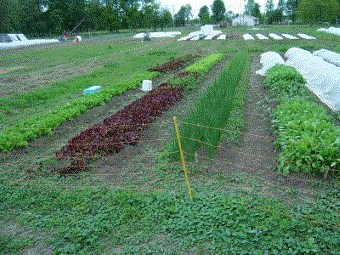Growing Sweet Potatoes in the Great White North
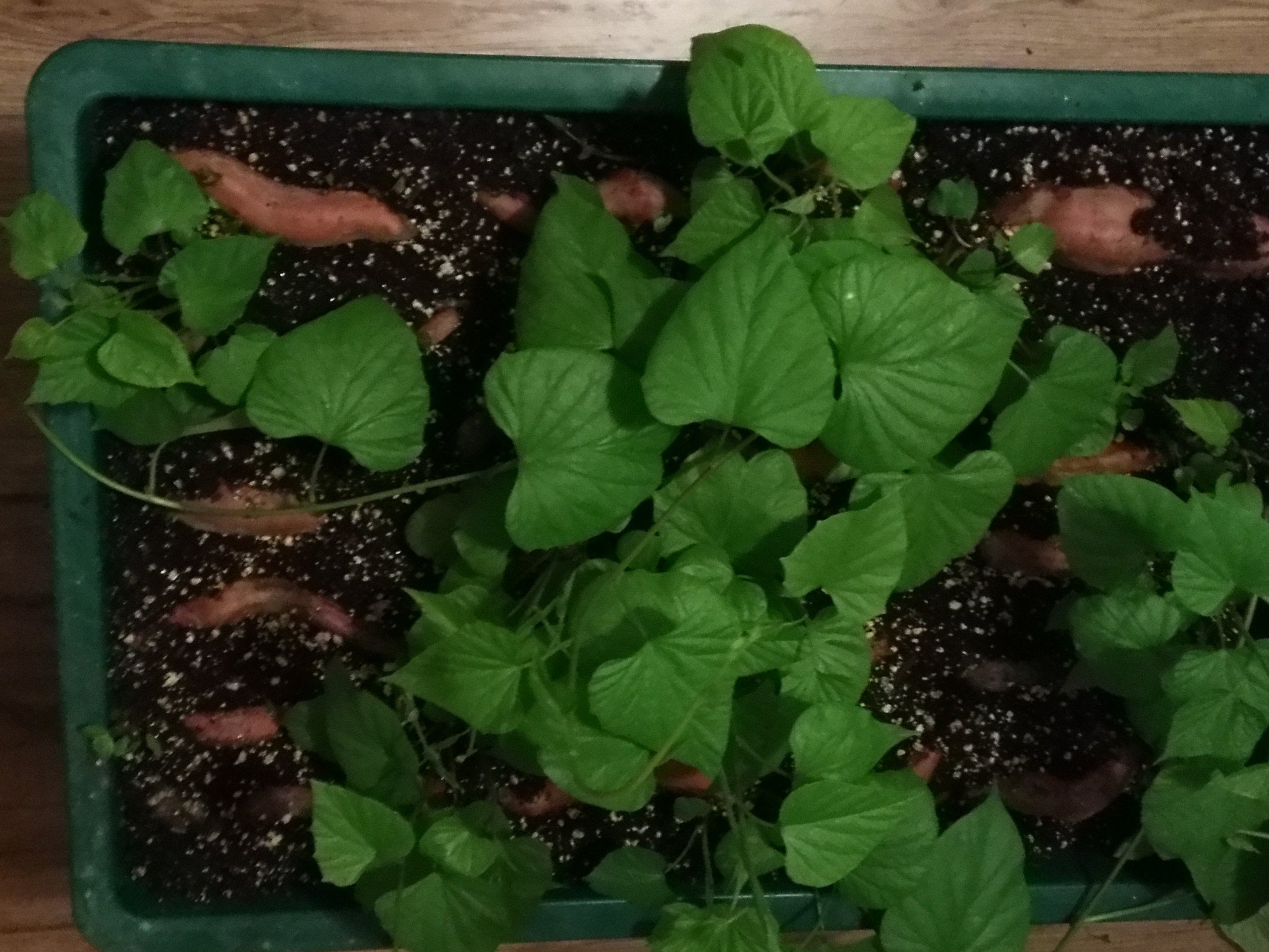 Cultivating slips for growing sweet potatoes
Cultivating slips for growing sweet potatoesGrowing sweet potatoes can be an important part of your food plan. And despite the fact that Ipomoea batatas is very susceptible to cold, you can grow them even in my chilly 45N latitude.
Let’s talk about the why, what, how, and how much of growing sweet potatoes in a cold climate.
Why grow sweet potatoes? In my recently-published book Bootstrap Survival Garden I explain the fact that long-term survival means creating a sustainable food supply, and that means growing your own food.
The 'Core Four' crops in that book are:
- Irish potatoes;
- Sweet potatoes
- Winter squash
- Dry beans
These crops all meet my criteria for yield, nutrition, and storability. In other words, they can provide you a lot of food, in places where the ‘eating season’ extends well beyond the ‘growing season’.
I also added another criterion: repeatability. That is, the ability to re-grow the crop from your own seed stock. And if you go about it right, growing sweet potatoes admirably meets all these criteria.
What to Grow?
When I first decided to try growing sweet potatoes to add to our survival food plan a couple years ago, I checked around with some successful growers in my area. The variety most often recommended was ‘Georgia Jet’.
It has the reputation for high yields, cold tolerance (relative to other varieties), and producing well even in a short growing season; about 90 days to maturity from transplant.
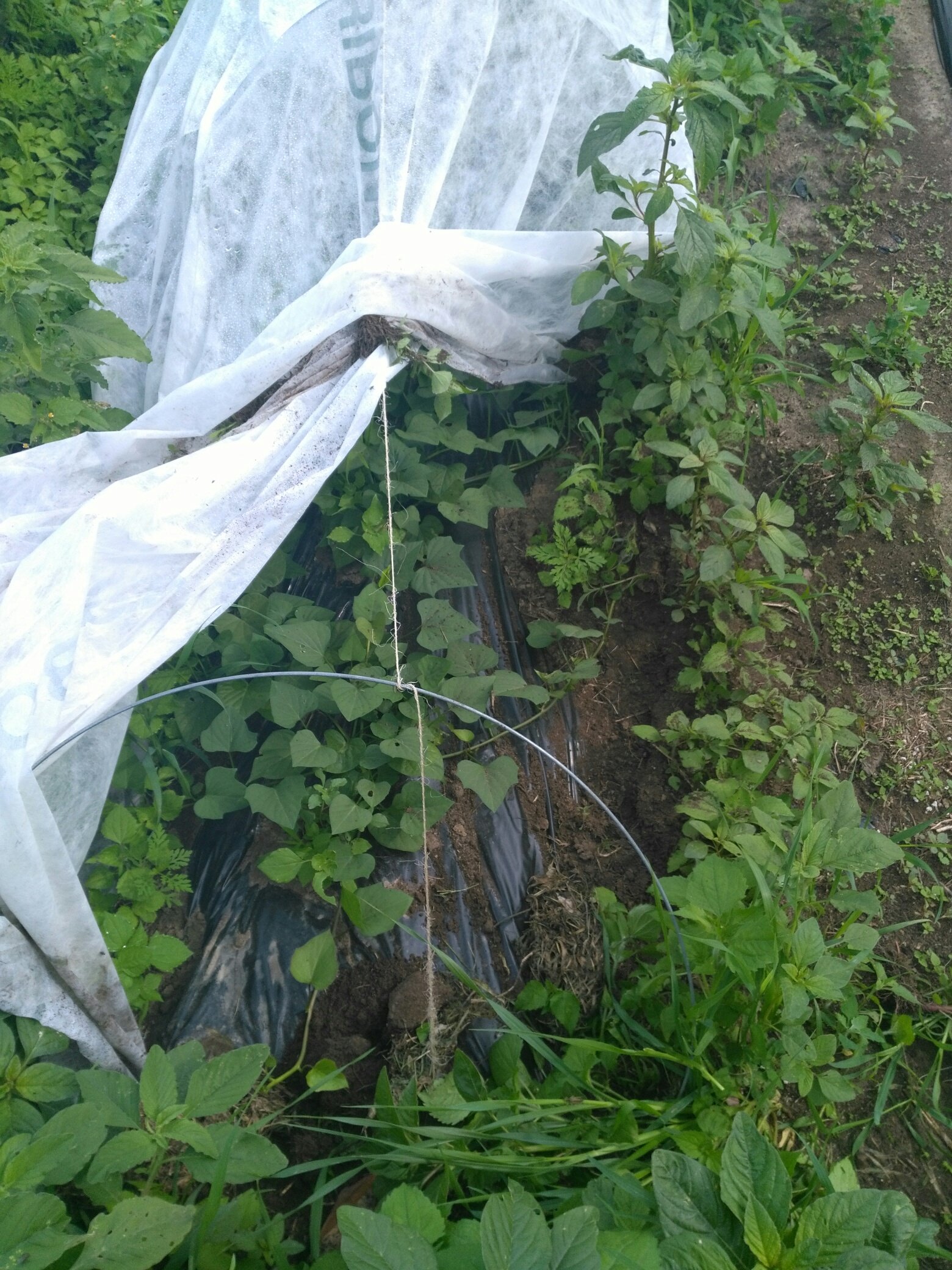 Georgia Jet Sweet Potatoes all in a row
Georgia Jet Sweet Potatoes all in a rowGeorgia Jet is available from a number of commercial seed sources; I got my first slips from one the aforementioned successful growers. My experience bears out the desirable characteristics of this variety.
The SECRETS to Growing Sweet Potatoes in a cool climate
With slips in hand, and past your last frost date, you need to prepare a seed bed. What we’ve learned from experience is that, while the soil does not need to be especially rich, it should be deep and loose for best yields. The best way to achieve this is to mound up the row i.e. make a deep bed.
Steps in the process:
- Location: We plant in a spot that gets full sun, in a location that received a generous dosing of composted manure the year before. Sweet potatoes have the reputation of tolerating wet soils. the roots won’t die, even if flooded for extended periods, but growth stops for the duration. A raised bed should let you grow them even in soggy areas of your garden.
- Bed prep: Once you have built a deep bed/row, lay down drip irrigation and black plastic mulch. Drought slows or stops the growth of sweet potatoes; if you have a short growing season, this is not desirable. The mulch and the drip will help keep a steady supply of moisture to the plants. The plastic mulch also provides critical extra heat, and some degree of chill protection in the fall. Bonus, the mulch keep weeds down
- Planting. Plant the slips 16-18 inches apart through a slit or hole the plastic mulch. Plant up to half the length of the slip, horizontally 3 or 4 inches deep. Water them in well with a dilute solution of fish emulsion. Then - IMPORTANT - cover them with row cover, to provide wind and chill protection. About 90 days later, harvest, cure and enjoy!
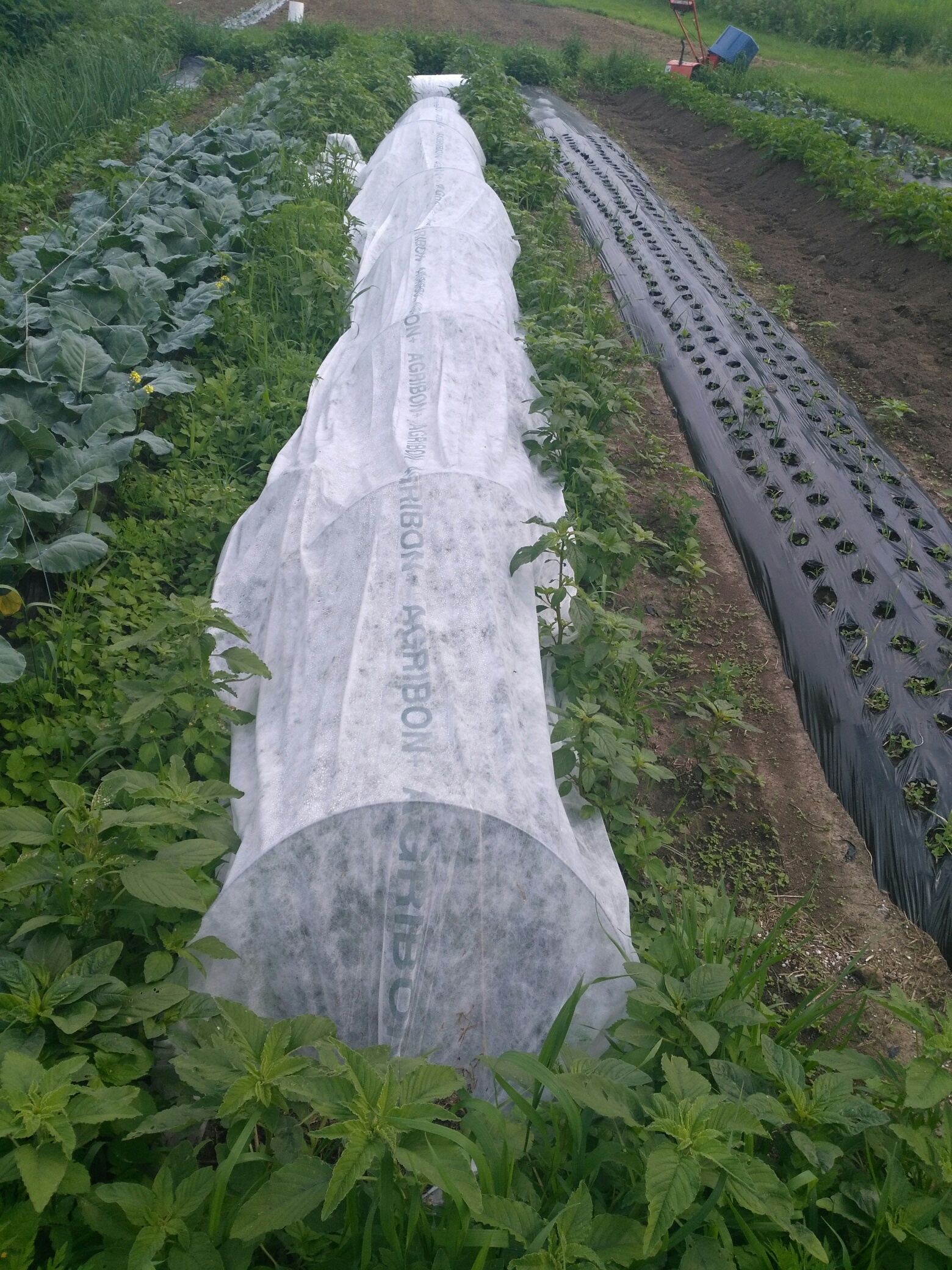 Growing sweet potatoes snug under row cover
Growing sweet potatoes snug under row coverYes, I know that row needs some weeding ;-) It was a wet and weedy season in my part of the Great White North. But the plastic mulch helped keep the weeds out and the heat in, so I got some great spuds anyway.
How much to grow?
The books say you can expect a yield of 3 to 5 pounds per plant. Following the method outlined here, Year One we put 30 plants in a 50-ft row and got 100 pounds of tubers. This year, 20 plants yielded 80 pounds. So that seems like a good estimate.
Harvesting, curing and storing sweet potatoes
This may be the most critical part of growing sweet potatoes, from a survival food perspective. Sweet potatoes are very susceptible to chill injury, and must be cured at high temperatures (90 degrees) for 5 to 7 days, and then stored above 55-degrees for long-term viability.
This also means you need to get them out of the field before soil temperatures drop below 55. Chilled sweet potatoes won’t store, and won’t sprout. Keep them (much like winter squash) in a cool (60-65 degree) bedroom or storage closet until ready to eat and sprout.
I dug my sweet potatoes, gave them a warm rinse, and let them dry in the sun for a few hours. Then I moved them to my plant starting room, and cranked the heat to 90. Left them in there for 6 days, then brought them into a spare bedroom for storage.
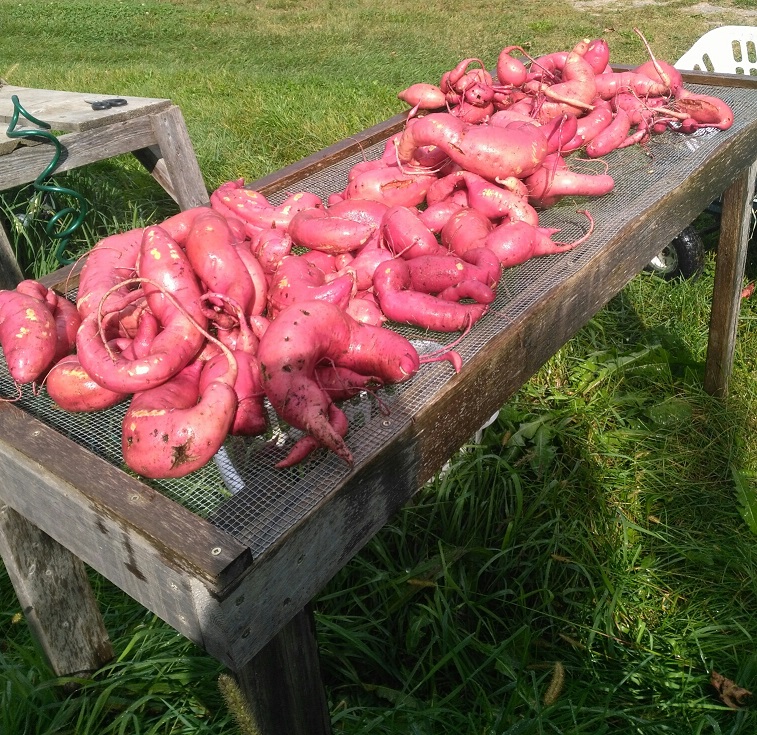 Sweet potatoes drying in the sun
Sweet potatoes drying in the sunClosing the Loop - growing slips. If you have cured and stored your sweet potatoes this is pretty easy. The basic process:
- Select sound tubers, free from rot or soft spots. I generally use the small, skinny ones that are impractical for eating, for sprouting purposes;
- Put about an inch of damp potting soil or Promix in a flat. Place tubers side by side, as many as can fit in the flat.
- Cover with an inch of damp soil or promix;
- Keep them warm, 75 degrees-plus, and water to keep moist
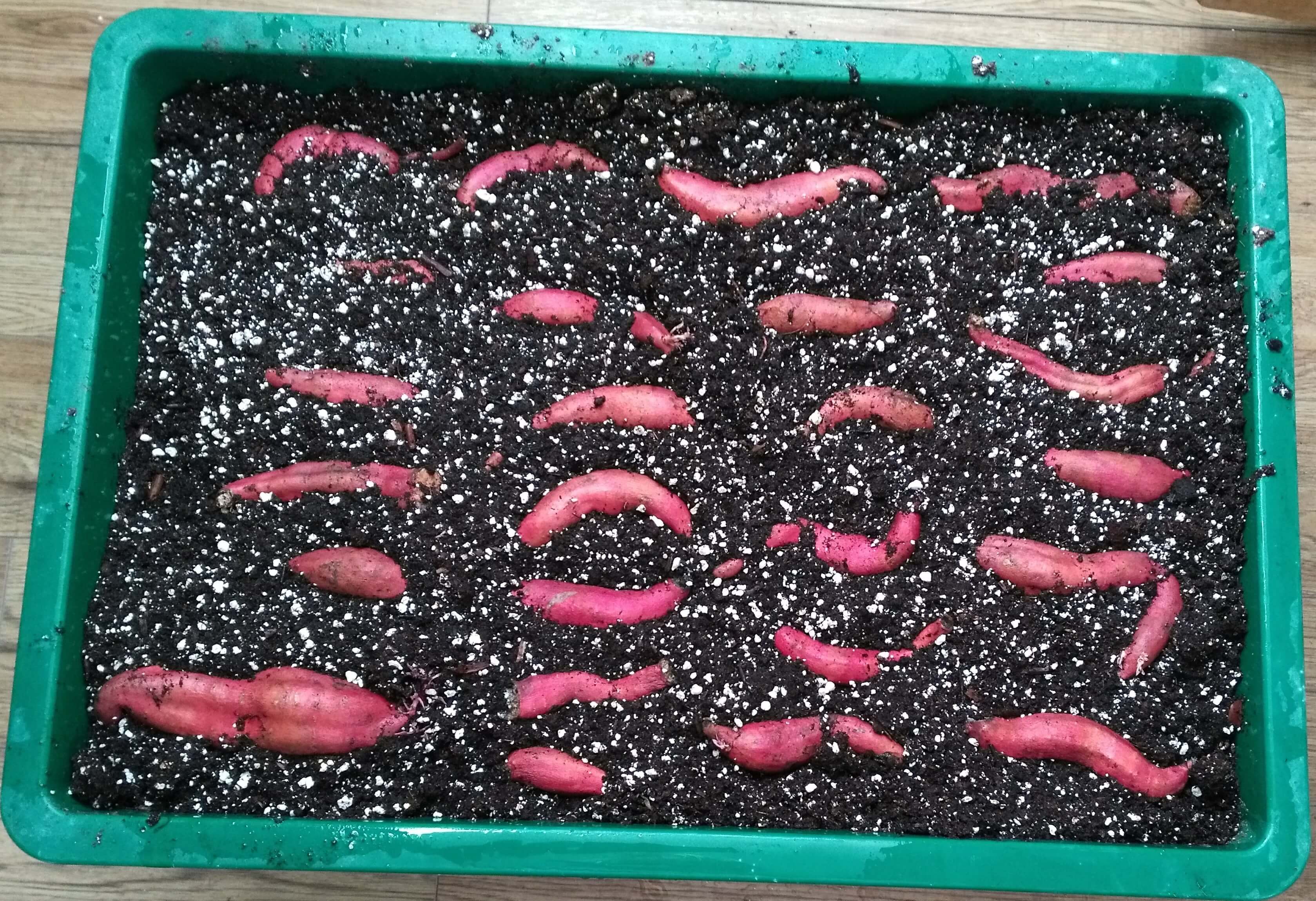 These little tubers are just right for sprouting
These little tubers are just right for sprouting- Once sprouts appear, move the flat to the sunniest warm location you have, or under grow lights.
- Sprout production takes 3 to 6 weeks; judge your timing accordingly for spring planting.
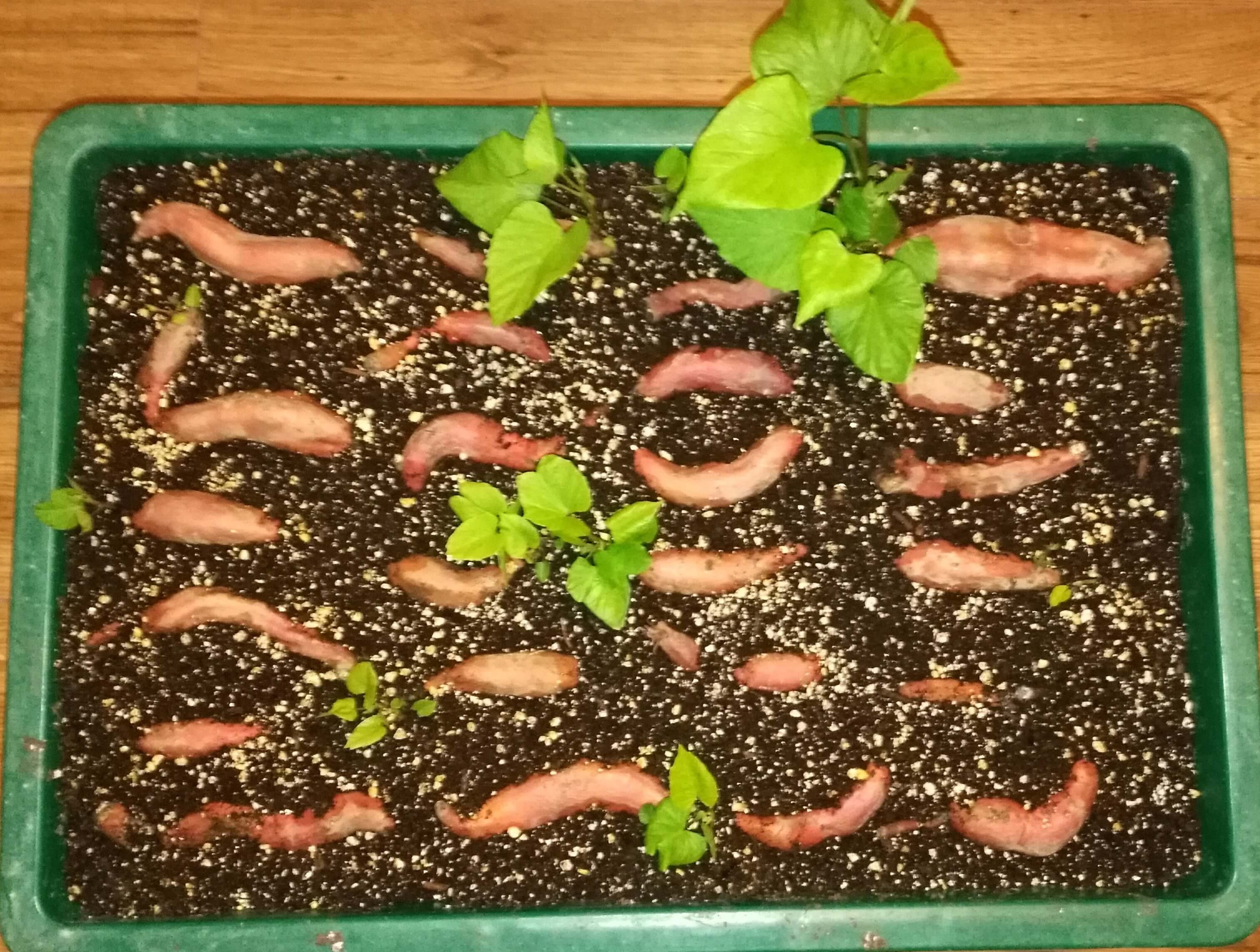
When ready to plant, pull the base of the sprout free from the tuber, and plant as detailed above.
Here's where you can buy Georgia Jet
Free Reports from New Terra Farm

The consumer demand for fresh local organic food has never been higher. Bad news on the supply chain is good news for local growers.
Get my free Organic Market Gardener Start-up Guide and see if this is the right time to launch your CSA market garden business.
A fellow grower lost out on $5,000 in her first season because of one simple mistake. Get your FREE Market Garden Starter Guide and avoid this costly error.
Enter your email address and your free report will be sent to you right away.
Other links of interest
Here's my curated list of micro-farm equipment for the small grower
Check out some great products for farmers and gardeners here farm grown reviews
This is a pretty good article about Urban Survival.
Diversify, but do it smart. Read this before you start. Farm Side hustles that work in the real world
You might also want to up your survival game with my Homestead Book Bundle
And, because there is more to survival than just food, here's a resource with literally HUNDREDS of great tips and low-cost projects for your homestead. The Self Sufficient Backyard. Highly recommended.
- Home Page ›
- Farm Survival Plan ›
- Growing Sweet Potatoes
- Home Page ›
- Vegetable Farming for Profit ›
- Growing Sweet Potatoes
See Something You Like? Share!
Got questions to ask, stories to tell?
Share your organic market gardening question, or comment, or story.
